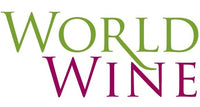We aim to have all wines be vintage specific. In the case the listed vintage is out of stock and you note you would like that particular vintage, we will inform you via email for approval to go ahead.
About This Wine
Virgile’s 8.5 hectare domaine specialises in Morey St.Denis: There is the villages cuvée of Morey St.Denis Vieilles Vignes which is a blend of Très Girard, Cougets and Chenevery – the Cougets was classed as Bourgogne 20 years earlier – plus the villages Morey St.Denis En la Rue de Vergy whose vines sit just above the Clos de Tart. Then there are three 1er cru Moreys; Cheneverys, Aux Charmes and Faconnières before we move to his two Morey Grand Crus; Clos de la Roche from just below Ponsot’s Monts Luisants section, and a tiny parcel of Clos St.Denis which produces only one barrel.
The Clos de la Roche is a mix of 45 and 18 year-old vines, whereas the Clos St.Denis vines were replanted in 2003. To round off his range, Virgile has tow villages cuvées from either side of Morey; a Chambolle-Musigny Vieilles Vignes and also a Gevrey-Chambertin. Virgile is very fortunate as a number of his holdings are parcels of old vines, including 50 year-old vines in Chambolle, and each of his three 1er cru Moreys, where the vines range between 55 to 60 years-old. In 2006, about 60,000 bottles were produced.
Father and son had worked well together, and without conflict, but in 2000, right from the start, Virgile chose to make changes that reflected his own philosophy – mainly in the vines. Green pruning and working the soil without herbicides were the starting point, but there were also some changes in the cuverie; a sorting table for the grapes and more new barrels for the elevage.
Virgile describes his wine making as ‘traditional vinification’; destemming (usually 100%), a short 5 day cool maceration with fermentation starting naturally thereafter – the vinification is usually about 20 days and there is no post-fermentation heating. There is much tasting to decide on the punch-down regime – and it is often tailored to each cuvée. Francois Freres is the main choice for barrels with medium toast Alliers and a little Vosges wood. As the barrel cellar cannot be extended from it’s current capacity of 130 casks, time in barrel is limited to 12-16 months.
There are typically 1 or 2 rackings; one for making the blends if required, and the second before bottling, which is done without filtration. Virgile also looks to make these operations in-line with a good phase of the moon.
And what is Virgile looking for in his wines? “Wine with good fruit, good ripeness and a good balance”. He can achieve this with yields of 40-45 hectolitres per hectare for the Villages and 1er crus, and 35-40 hectolitres per hectare for the grand crus. Of-course it is vintage dependent, for example he needed to make a very strict triage of the grapes in 2004, but was very happy with the final result.
| Type | Red Wine |
|---|---|
| Varietal(s) | Pinot Noir |
| Country | France |
| Region | Burgundy |
| Brand | Lignier-Michelot |
| Vintage | 2017 |
Wines from Burgundy

A legendary wine region setting the benchmark for Pinot Noir and Chardonnay worldwide. In the Jurassic time period, the area was part of a vast, tropical sea. Over hundreds of millions of years, the seabed transformed into various layers of limestone, sandstone and clay soils that have entrapped the fossils of ancient sea creatures. These soils are the secret behind the zesty minerality that Burgundy wines are famous for.
Burgundy is probably the most terroir-centric wine region in France. Huge emphasis is placed on the specific vineyard, soil type, elevation, and angle of slope where the wines were made. This is reflected on the wine's labels where appellations are more prominently displayed compared to the producers’ names.
The most prestigious wines of the region come from a long and narrow escarpment called the Côte d'Or split into the Côte de Nuits to the north and the Côte de Beaune to the south. Côte de Nuits produces many of the world’s finest Pinot Noir’s, all but one of Burgundy’s red Grand Crus are made in this area. Whilst interestingly, the opposite is true for the Côte de Beaune where all but one of the Chardonnay Grand Crus are made. From this information it may seem you should be buying a Pinot from the North and Chardonnay from the south, that is only true for the pinnacle of Burgundian wines. Both outstanding reds and whites are produced throughout the Côte d'Or.
In Burgundy, they use a wine quality tier system that goes:
Grand Crus 1.4% of total production
Premier (1er) Crus 10.2% of total production
Appellations Villages 37.3% of total production
Appellations Regionales 51.1% of total production
When one refers to “Burgundy wines” they are usually talking about those produced in and around the Côte d'Or. While the Chardonnay’s from Chablis and the Gamay’s from Beaujolais are formally apart of the Burgundy wine region, those subregions are generally referred to by their own names rather than being considered “Burgundy wines”.





 France
France Italy
Italy Spain
Spain Australia
Australia New-Zealand
New-Zealand Germany
Germany Austria
Austria Portugal
Portugal South-Africa
South-Africa Greece
Greece USA
USA